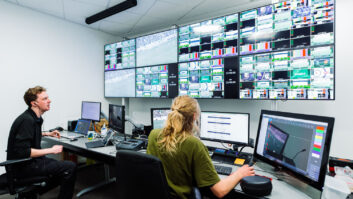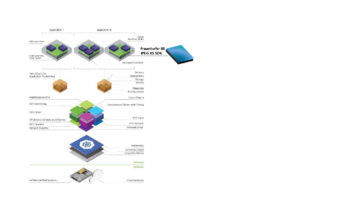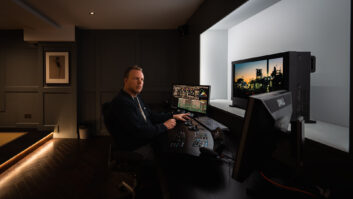Newsroom automation and prompting company QTV has announced the launch and first sale of its IP-based, networked prompting system, QMaster, part of the QNxt product suite. The system has been purchased by a European broadcaster in Latvia via QTV’s parent company Autocue.
The QMaster system uses IP architecture and comprises a software application on the control PC, which communicates over an Ethernet link with a highly compact QBox unit to scroll the script. The QBox can be positioned with the prompter itself, providing a level of intelligence, opening up a number of real world user benefits, both inside the studio and in the field. This solution will work with any third-party on-camera unit, and the new architecture enables the operation of remote prompters from a central location. For example, a global news broadcaster has the ability to scroll a prompter in Las Vegas from a central control in London, or in fact anywhere around the world, enabling seamless handovers between presenters across structured shifts throughout the day for 24/7 worldwide transmission.
In the field, a war correspondent reporting from the front line can receive their script via email or SMS and make changes to that script before uploading it to the QBox. The cameraman can then clip the highly compact QBox to his belt and the correspondent can continue to deliver his piece to camera. The presenter has wireless control of the prompter and the cameraman is entirely untethered, giving complete freedom in delivery.
QMaster has great potential for other outside broadcast scenarios such as red carpet interviews. An operator can accompany the crew at a distance, using a wirelessly connected PDA to scroll the prompter, unattached to the cameraman so as not to hinder his angles. Archaeological digs are another excellent application for QMaster. An operator can remotely and wirelessly scroll the script using a standard laptop as the production team and presenter moves around freely.
This simple yet revolutionary change in the architecture removes the single composite video source that links the central PC to the prompter and replaces it with a control signal that requires significantly less bandwidth, which means broadcasters can achieve the ultimate in prompting: a resilient and versatile wireless connection without additional weight to the prompter.
“QTV has completely rewritten the architecture of prompting systems, moving the level of intelligence away from the central system out to the prompter itself adding a new layer of resilience and accessibility in the process,” explained Bruce Levine, QTV Vice President. “This new method in prompting architecture means that in the event of a failure on the control PC, prompting continues via the QBox, which saves a copy of the current script or run order, providing total resilience.”







